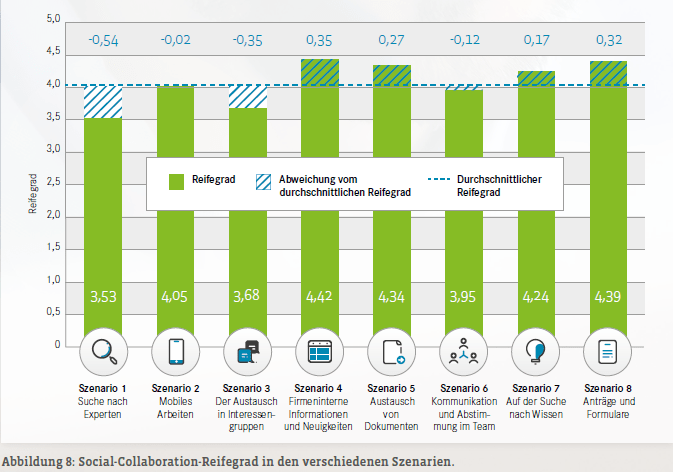Collaboration? But then please do it right! – Part 2
In the first part of our Collabration blog series I have already talked about the current situation and the 5 core insights we have gained through our own experiences. Today I would like to take this even further and help you totake the right steps right from the start to enable targeted and efficient collaboration with the help of Microsoft teams in your company.
There is hardly a company these days that doesn’t use the buzzword collaboration. The “Denglish” is becoming an increasingly important part of the everyday working life of all of us. But what exactly is “collaboration”?
Simply translated, “collaboration” means: working together. But the meaning goes far beyond that and describes a cooperative collaboration between people to achieve a common goal, a project. The employees can come from the same company or work together across companies. Anexample from our ownday-to-day project work also fitsvery well here:. wehavebuiltupa separate teamfor each customer. This team is also subdivided into the customer’s individual projects, which we have mapped as channels in MS Teams. All project communication takes place via these channels. Messages are exchanged via chat, meetings are held and probably the most important function documents are centrally stored so that it can be worked on together and all project members always have an overview.
In the current situation and due to the constant digitalization, collaboration is often seen as an IT solution for cross-location collaboration and networking.
The right approach for the introduction of a collaboration tool
Every company already works together today… But is this also goal-oriented and efficient? Often a wide variety of Word, PowerPoint or Excel documents in different versions are sent by e-mail or stored in a central directory. The fear of overwriting something or working with another person on a document at the same time often leads to each editor creating his own versions. So “collaboration” is already taking place, but not really efficiently!
This is despite the fact that a recent study shows that the maturity level of the use of modern technologies for collaboration has increased significantly in recent years, especially when it comes to the internal exchange of information, but also the exchange of documents.
At the beginning you should be aware of your weak points and improvement potentials, because there is no added value in introducing Microsoft Team only because it is hip and everybody does it!

It is also important not only to look at one’s own department, because cooperation within a company often takes place across departments. Therefore it should be avoided to build up single silos again, but the whole big picture should be in focus. With the integrated document management in Microsoft SharePoint, Microsoft Teams offers you the possibility to manage all documents centrally in one place – whether in purchasing, marketing, sales or service.
In advance you should ask yourself the following questions:
It is then recommended to identify a pilot group and to address a first implementation scenario with this group. This can be, for example, a newly initiated project involving various departments. So you stay agile, flexible and keep everything in view. You should also introduce Microsoft teams in stages, depending on where you have identified your greatest weaknesses and potential for improvement. The goal should be the same as always – keep it simple! For the IT, as well as for the users. Too many functionalities at once only overstrain and reduce the acceptance, which at the end of the day is decisive for the success or failure of the collaboration strategy.
An exemplary first phase can look as follows:
Often follow in the further phases:
The way to collaboration is a change process
If you are also thinking about the introduction of Microsoft teams, it is important to know that in addition to the technical introduction, a certain amount of change management within the company is also necessary. Not all process steps retain their validity or are implemented as before. Especially with regard to communication we are changing a lot! And therefore it is important to be aware of this in advance.
- In the past, all company or departmental information was sent by e-mail, but tomorrow individual contributions will appear in different conversations.
- Whereas in the past an e-mail was written to distribute tasks, today this is set up and processed directly in MS Teams.
What sounds banal in these cases has a major impact on the daily work of each individual employee. Not every generation copes with the information overload that can result from a collaboration tool as well as often younger generations who grow up with WhatsApp, Snapchat and Instagram and know the information overload from an early age. Not everyone will perceive all information, because they overlook the existing push messages…
Therefore, it is also important to develop a communication strategy that extends over several phases and involves all employees. On the way from classic e-mail ping pong to modern “collaborate”.
In my next blog post, I will share with you how to optimally set up your Microsoft team for the sales department.
I would be pleased if you stay with us.

